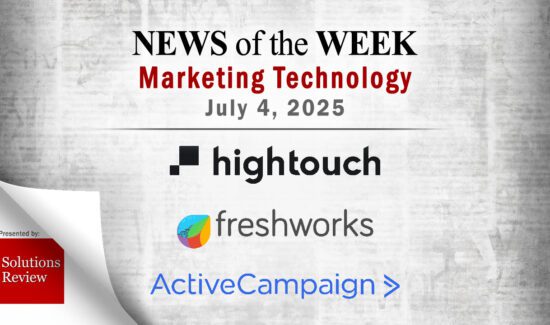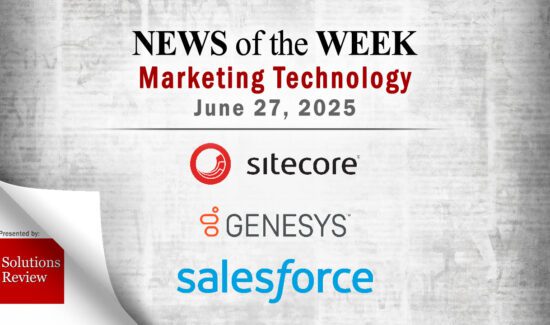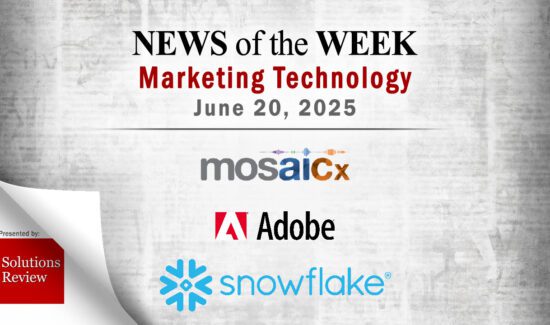What’s Changed: 2024 Gartner Magic Quadrant for Digital Experience Platforms


The editors at Solutions Review highlight and summarize the key takeaways and updates in the 2024 iteration of Gartner’s Magic Quadrant for Digital Experience Platforms.
Analyst house Gartner, Inc. recently released the 2024 version of its Magic Quadrant for Digital Experience Platforms. Digital Experience Platforms (DXP) include technologies designed to support organizations by digitizing aspects of their business to provide better customer experiences. These technologies have evolved from CMS, WCM, portal servers, and commerce servers.
According to Gartner, the core “must-have” capabilities of a DXP solution include contact management for various content types (i.e., textual content, graphics, and omnichannel rich media content), a composable architecture for modular and API-first approaches, cloud deployments, and support for multi-experience presentation, orchestration, delivery and assembly of digital experiences. Other features considered “standard” for these platforms include analytics, personalization tools, customer profile management, security controls, knowledge sharing, customer journey mapping, applied AI, customer data management, and more.
In this Magic Quadrant, Gartner identifies what it considers to be some of the most significant providers in the Digital Experience Platform marketplace. The analysts on the report—Irina Guseva, Jim Murphy, Mike Lowndes, and John Field—also evaluate each listed vendor’s strengths and weaknesses and rank them on the signature “Magic Quadrant” graph. The chart is divided into four quadrants: leaders, challengers, niche players, and visionaries. You can find our summary of the 2023 report here.
What’s Changed: 2024 Gartner Magic Quadrant for Digital Experience Platforms
To qualify for Gartner’s report, each DXP vendor met specific criteria. These include generating at least $17 million in revenue with five-percent year-over-year revenue growth in the 12 months leading up to June 2023, having been on the market since June 2020 at the earliest, maintaining an active ecosystem around its DXP solution, and more. The vendors must also provide their DXP product as a cohesive and integrated product under one name, support B2C and B2B environments, and align with the core capabilities listed above.
A breakdown of each category and the companies associated with it is below.
Leaders
Adobe once again kicks off the Leader category with its Adobe Experience Cloud, a solution suite that includes Adobe Experience Manager (AEM), Adobe Target, Adobe Analytics, and Real-Time CDP. Its primary use is B2C, which can be used for certain B2B and B2E purposes. Gartner spotlights its widespread adoption, in-depth product features for external-facing digital experiences, and extensive partner channels as differentiating features in the DXP marketplace.
Optimizely also retains its place in Gartner’s report with its Optimizely One platform, which provides users in B2C and B2B markets with content management, personalization, customer data management, and analytics capabilities. Its strengths as a DXP include a simple pricing model that gives prospects a lower barrier to entry, its approach to acquisitions, and its Optimizely Graph tool, which unifies data across Optimizely’s capabilities and allows for better AI-powered semantic search and support services for external data sources.
Acquia closes out the Leader category with the Acquia Open DXP suite, which includes Acquia’s Cloud Platform, CMS, Site Factory, CDP, DAM, and Campaign Studio products. The company supports B2C and B2B use cases but can be used in B2E environments. Gartner’s report highlights Acquia’s open-source Drupal community and its marketplace for pre-built integrations, connectors, and modules as notable strengths. The platform also receives high marks for its extensive customer journey mapping, personalization, and segmentation capabilities, augmented with AI technology.
Challengers
OpenText maintains its spot in the Challenger category with the OpenText Experience Cloud solution, which includes content management, analytics, personalization, optimization, and DAM capabilities. While primarily deployed in B2C use cases, OpenText Experience Cloud applies to some B2B use cases. Some of the platform’s defining qualities include its governance, security, account management, and auditability features and its support for companies with broader information management strategies.
HCLSoftware is the second Challenger in this year’s report. Its DXP, HCL Digital Experience (DX), is part of its broader HCL Customer Experience (CX) product portfolio. It provides users with content management, DAM, CDP, and low-code application development capabilities. HCLSoftware works with large enterprises across B2B, B2C, and B2E markets. The company’s strengths as a DXP provider include its industry expertise, focus on security and privacy management, an extensive global presence, and a new user session licensing program.
Niche Players
Liferay has claimed the top spot in this year’s Magic Quadrant. Its DXP is offered via SaaS, PaaS, and on-premises/customer cloud deployment. The Liferay DXP offerings support experiment management, analytics, personalization, and content management capabilities and are used across B2B, B2C, and B2E markets. Notable strengths include its enablement of portal experiences, approachable user experience, and approach to partnerships, which have increased Liferay’s geographical and vertical industry expertise.
Crownpeak’s DXP, the Crownpeak Digital Experience Platform, is often deployed in B2B and B2C use cases. It provides users with content management, present, and orchestration capabilities, alongside support for consent management, compliance, governance, and security. Strengths as a DXP provider include its support for mid-size enterprises, SaaS infrastructure, simple pricing plans, acquisition strategy, and combination of GenAI content and image generation, courtesy of its Digital Quality Management solution.
Kentico offers two DXP solutions: Kentico Xperience 13, which was launched in 2020, and the newer version, Xperience by Kentico. Kentico’s solutions target digital marketers and mid-size organizations across B2B, B2C, and B2E use cases. Gartner spotlights the low-cost pricing clarity of Kentico Xperience 13, its ease of use, and its emphasis on partners as differentiating strengths in the marketplace.
CoreMedia’s DXP is the CoreMedia Content Cloud solution, which includes content management, integration, and interoperability capabilities. It recently expanded its features with the 2023 acquisitions of BySide and Smarkio, which have helped CoreMedia enhance its personalization, chatbot, live chat, contact center, and journey mapping capabilities. Alongside those acquisitions, CoreMedia stands out in the DXP market with its packaged integrations for other technology providers (i.e., SAP, Salesforce, Algolia, and others) and its pre-fabricated solutions.
Progress’ DXP solution, Progress DX, is a product suite consisting of Sitefinity for content management, Sitefinity Insight for CDP, NativeChat for conversational interfaces, and Telerik and Kendo UI for app UI and user experience development. The company primarily works with mid-size organizations in B2C markets. Gartner lists its strengths as its AI-assisted conversational interface capabilities, user-friendly interface, and its progress toward authenticated portal-like experiences.
Squiz is the final Niche Player in this year’s report. Its DXP platform includes content management, search, integration, personalization, and customer data management, which can be used by mid-size organizations in B2C, B2E, and B2B markets. According to Gartner, Squiz’s strongest DXP features include its composability, deployability, highly-rated user experience, the Squiz Marketplace, and the pre-built collaboration and knowledge-sharing capabilities for intranets and employee portals.
Visionaries
Sitecore is a Visionary in this year’s report. Its DXP suite comprises eleven products bundled into its Content Cloud, Engagement Cloud, and Commerce Cloud solutions. However, Gartner only reviewed the Content and Engagement Cloud offerings for this report. Sitecore is commonly deployed in B2C use cases but has developed a growing foothold in B2B markets. Its strengths include its extensive application marketplace, its fully cloud-native SaaS offerings, and the strides it’s made in its product vision, which include the release of new capabilities for its XM Cloud product.
Bloomreach has maintained its spot in the Visionary category with its Bloomreach Commerce Experience Cloud solution, which consists of ten modules across three categories: Content, Discovery, and Engagement. Its fully SaaS solution is used across both B2C and B2B use cases. Its notable features include a module pricing strategy, the composability of its SaaS-based solution, its continued growth amid economic uncertainty, and its in-depth end-user data privacy and protection strategies.
Magnolia’s DXP once again closes out this year’s Magic Quadrant for Digital Experience Platforms with its DX Core product, which supports core capabilities like content management, personalization, and search. It’s often deployed in B2C and B2B use cases and is well-regarded by clients for its commitment to high-touch customer relationships and support services. Other strengths include its integration of generative AI into its architecture and its embrace of composability through no-code connector packs.





















